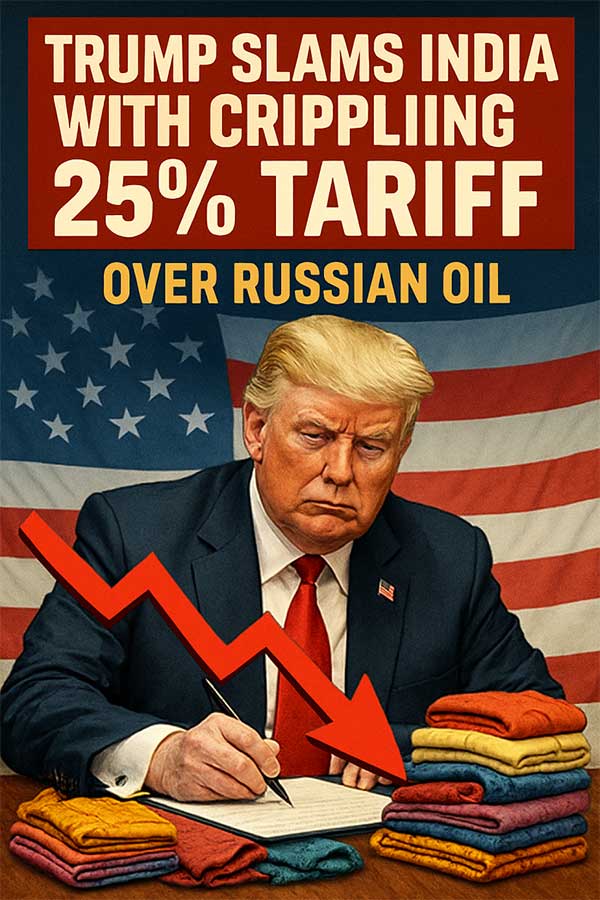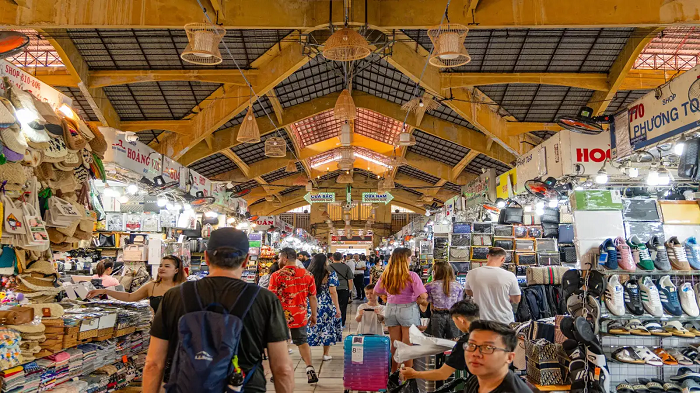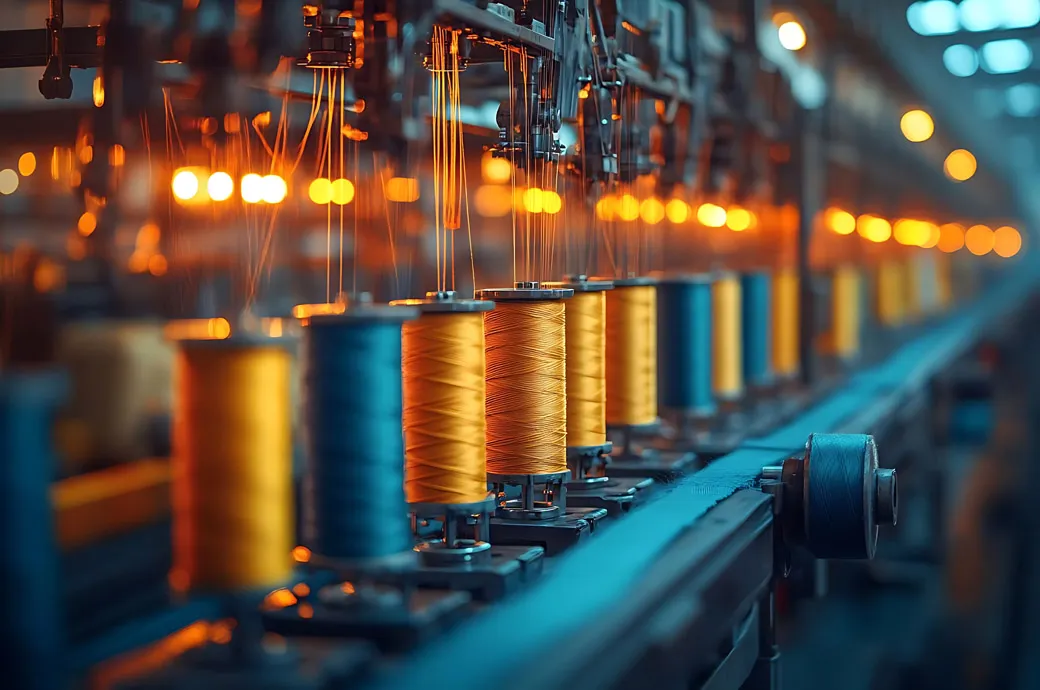Amidst the escalating Red Sea crisis, the Synthetic and Rayon Textiles Export Promotion Council is urgently requesting increased duty drawbacks, State and Central tax rebates (RoSCTL), and higher Remission of Duties or Taxes on Export Products (RoDTEP) rates to alleviate the mounting challenges faced by textile exporters.
The Red Sea turmoil has severely impacted textile exports, causing shipment delays and a surge in operational costs. Ongoing attacks by militants on cargo ships navigating the Red Sea, a crucial trade route linking Europe and Asia through the Suez Canal, have compelled vessels to take a 6,000-nautical-mile detour around Africa. This diversion results in an extra 15 days of transit time, leading to a substantial spike in freight rates and insurance premiums.
Bhadresh Dodhia, Chairman of the Synthetic and Rayon Textiles Export Promotion Council, expressed deep concern over the situation, emphasizing that the crisis poses a significant threat to the textile and clothing export sector. Freight rates to European ports from India have already surged by 40%, with projections of further increases.
Dodhia urged the government to intervene promptly, providing essential support to ensure the survival and sustainability of textile exporters grappling with the crisis. He underscored that if the situation persists, it could not only adversely affect Indian exports but also disrupt the global supply chain, causing severe repercussions for the world economy.
Spring Fair, the UK's premier marketplace for Home, Gift, Fashion, and Everyday essentials, is gearing up for its 2024 edition at NEC Birmingham from February 4th to 7th. A highlight of the event is the much-anticipated launch of ‘The Little Black Book,’ a limited edition buyer's guide offering a sneak peek into the show's highlights.
Running from January 2nd to 7th, ‘The Little Black Book Week’ allows buyers to secure a limited printed copy by registering before January 7th. This exclusive guide, a buyer's essential, promises insights into new and returning exhibitors, 13 product sectors, masterclasses, and renowned speakers.
The guide's invaluable features include a floor plan, a color-coded guide, an A-Z Exhibitor List, and highlights of events at the Inspiring Retail Stage, Trend Talks stage, and Masterclass Studio. Buyers can efficiently navigate the vast product offerings, ensuring a seamless and enriching experience.
Soraya Gadelrab, Event Director at Spring Fair, hails ‘The Little Black Book’ as the buyer's bible, offering a head start on curating best-selling collections, discovering new products, and staying abreast of emerging trends.
For those unable to attend, digital copies will be available for registered participants. Spring Fair 2024 promises to be an unparalleled retail event, emphasizing discovery and innovation across Home, Gift, Moda, and Everyday essentials. Buyers are encouraged to register promptly for their free copy and ensure a front-row seat to the industry's latest and greatest.
In the initial ten months of 2023, Japan's apparel imports soared by 2.08% YoY, reaching US $19.59 billion. Notably, October witnessed a sharp 11.40% MoM surge, totaling US $2.93 billion.
Despite the value spike, 5.29% decline in the weight of imports from January to October 2023.
China remained the leading apparel exporter, but with a 5.71% decrease, while Vietnam experienced a noteworthy 12.07% growth.
Other nations, including Bangladesh, India, Pakistan, and Indonesia, reported increased export values but faced simultaneous declines in shipment weight.
In a strategic move to advance its development agenda, China's State Council has announced modifications to import and export tariffs effective January 1, 2024. The Customs Tariff Commission's declaration on December 20, 2023, underscores the nation's commitment to high-quality development, innovation, and advanced manufacturing.
The adjustments maintain tariff quota management for eight commodity categories, including wheat, with unchanged tax rates. Notably, sliding tariffs on designated amounts of cotton and favorable terms for chemical fertilizers, such as urea and compound fertilizer, are set to persist. The alterations also align with existing trade agreements, offering reduced taxes on imports from nations like New Zealand, South Korea, and Australia.
The impact of these changes extends beyond national borders, particularly in the chemical commodities market. Importantly, tariff shifts may present challenges for overseas traders in crucial substances like ethylene and propylene. Increased costs for specific chemicals, balanced by tariff waivers for medical goods, could reshape market dynamics. The provisional import tax rate introduces an element of uncertainty, potentially prompting price fluctuations.
While textile and chemical industries may face rising costs due to sliding cotton tariffs, reduced taxes on chemical imports from agreement nations may enhance competitiveness. Ultimately, these tariff adjustments signify a transformative phase for China's economic landscape, influencing both domestic and international trade dynamics.
China's 2023 cotton production plummeted by 6.1%, totaling 5.61 million tons, per the National Bureau of Statistics.
A 7.1% decrease in cotton acreage, primarily in Xinjiang, which contributes 90% of China's output, was attributed to adverse weather.
Experts link the decline to excessive rain, prolonged summers, and lower temperatures, impacting yields.
Cambodia's garment, footwear, and travel product exports suffered a 15% decline, falling from $11.7 billion to $9.9 billion in the first 11 months of 2023.
Apparel and textiles recorded $7.22 billion, down 14.8%, with footwear dropping 23% to $1.21 billion and travel goods decreasing by 9.8% to $1.47 billion.
The European Union, the United States, Canada, and Britain, key buyers of these products, contributed to the decline due to a global economic slowdown, particularly in the EU, said Ministry of Commerce’s Secretary of State Penn Sovicheat.
The sector, with 1,300 factories employing 840,000 workers, predominantly female, is crucial for Cambodia's foreign exchange earnings.
The 44th Annual General Meeting (AGM) of the Apparel Export Promotion Council (AEPC) unfolded crucial insights into the challenges and triumphs of the Indian apparel industry. Despite global uncertainties marked by two wars and inflationary pressures, AEPC remains optimistic about India's apparel exports, showcasing resilience amid adversity.
Chairman Naren Goenka announced that Indian apparel exports demonstrated a remarkable growth of 30.35% in 2021-22 and 1.10% in 2022-23, defying the pandemic-induced stagnation in global demand. AEPC is now steering the industry towards ambitious goals, aiming to elevate India's apparel exports from the current $16-17 billion to $40 billion by 2030.
To achieve this target, AEPC outlined strategic initiatives:
1. Establishing an in-house Market Intelligence Cell.
2. Reinforcing traditional exports of cotton through initiatives like promoting Kasturi cotton.
3. Guiding the industry towards technical textiles, MMF, and new product categories.
4. Diversifying markets beyond EU and USA, with a focus on emerging markets in FTA countries, Australia, UAE, Latin America, and Africa.
5. Emphasizing Environmental, Social, and Governance (ESG) compliance and sustainability through the "Certificate Program on Sustainability."
6. Advocating for increased Foreign Direct Investment (FDI) in the garment sector to enhance competitiveness.
Chairman Goenka also urged the extension of the ROSCTL scheme, highlighting its crucial role in planning business consistently amidst challenging market sentiments. The AGM concluded with gratitude towards government support and a commitment to foster strategic partnerships for sustainable growth.

Embark on a journey through the dynamic world of fashion as TURBULENCE sets the tone for Intertextile Shanghai Apparel Fabrics – Spring Edition 2024. From March 6 to 8, the Trend Forum in Hall 5.1 at the National Exhibition and Convention Center (Shanghai) will showcase four trends—Grace, Immersive, Switch, and Voices—curated by the visionary DONEGER | TOBE from New York. Experience the unfolding of a complex and vibrant future in apparel trends.
In the ever-evolving landscape of fashion, a global committee of trend forecasters, including representatives from Elementi Moda in Milan, NellyRodi Agency in Paris, and Sachiko Inoue in Tokyo, has once again united to unveil the Spring-Summer 2025 trends. These trends, born from a tumultuous world, blend self-indulgence and self-expression, encapsulating the positivity and sensibility necessary to navigate the world's turbulence.
Ecological consciousness and everyday influencers shaping fashion
Fashion's trajectory is being reshaped by a dual force—ecological consciousness and the rise of everyday influencers. The committee identifies four distinct trends: Grace, Immersive, Switch, and Voices. Though interconnected by shared disorder, each trend manifests unique aspects that mirror the changing ethos of the industry.
Grace: A quiet luxury lifestyle
Harmony in simplicity. The Grace trend champions enduring luxury through the celebration of peace, love, joy, and respect. Utilizing ornamental delicacy, gentle colors, and high-quality materials, this trend promises a lasting sense of tranquility.
A silver-tinged color palette, featuring elegant hues and tender blooms, adorns gracefully wrought fabrics. Unprocessed toiles, irregular slubs, subtle shiny satin, featherweight jacquards, and printed sheer fabrics blend seamlessly to create an atmosphere of refined serenity.
Immersive: comfort and minimalist expression
Comfort in every detail. Immersive embraces comfort and a minimalist style, demanding attention with powerful, graphic, festive mixes that inspire a positive spirit of collaboration through fashion.
Cosmic and oceanic blues meet tropical dusk in a vibrant contrast. Fabrics range from the functional elegance of robbed stretch jersey and Sea Island cotton to the festivity of decorative embroidery and fluid viscose jersey, promoting a relaxed yet expressive style.
Switch: DIY high-tech experiments
Expressive experimentation. Switch heralds a new dimension of part DIY and part high-tech fashion, encouraging wearers to express their personal style through experimental twists on everyday situations.
Recycled polyester and polyamide, cotton satin, glazed poplin, multicolor deckchair stripes, and dotted variations converge in a vibrant palette of joyful pastels and energetic brights, aligning with the theme of joyful pleasures and fantasy experiences.
Voices: Dazzling freedom and new age fashion
Contrasting, dazzling freedom. Voices envisions a future of instinctive New Age fashion—an ode to Earth that combines raw character, positivity, and improvisation.
Exuberant tones and tinted darks in textural compositions define the color palette. Fabrics range from crackled crêpe and various organic fibers exuding ornamental rusticity to decorative and baroque elements featuring rich velvety surfaces and artistic patterns.
The unified textile value chain under one roof
As the apparel fair coincides with Intertextile Shanghai Home Textiles – Spring Edition, Yarn Expo Spring, CHIC, and PH Value, the entire textile value chain converges under one roof, creating an extended platform for invaluable business networking opportunities.
In this dynamic landscape where fashion and ecological consciousness intertwine, the SS 2025 trends offer a glimpse into a future where self-indulgence meets mindful expression, mirroring the resilience needed to weather the world's turbulence.

The international textile landscape has been in the throes of an unparalleled and prolonged downturn since the latter half of 2022. Despite an initial surge in demand post-COVID lockdowns, the global textile industry now faces significant challenges. In a recent press release, Dr. K. V. Srinivasan, the newly elected President of the International Textile Manufacturers Federation (ITMF), highlighted the multifaceted factors contributing to this downturn.
Weakening demand, inflation, and geopolitical tensions take a toll
According to the ITMF's Global Textile Industry Survey conducted in November 2023, weakening demand, inflation, geopolitical tensions, raw material price volatility, energy cost hikes, labor shortages, and rising interest rates collectively spell out the major causes of the industry's slump. Notably, 76% of respondents pointed to weakening demand as the primary culprit.
Cancellations and outlook
Approximately 44% of survey participants reported order cancellations in the past four months, with 5% experiencing major cancellations exceeding 30%. Looking ahead, 44% anticipate a more favorable business situation in the next six months, reflecting a cautious optimism that surpasses the sentiment in September.
India's textile industry bears the brunt
Dr. Srinivasan emphasized the detrimental impact on India's textiles and clothing sector, attributing it to challenges in raw material supply, soaring power costs, and policy shortcomings. Urgent corrective measures were urged, including the elimination of the 11% import duty on cotton, addressing Quality Control Order (QCO) issues, and resolving pricing concerns related to key materials.
Policy reforms urged for industry revival
Addressing the Indian government, Dr. Srinivasan urged a halt to short-sighted policies affecting raw materials, power, labor, and new investments until industry revival. Financial relief measures such as a one-year loan moratorium, conversion of short-term loans into long-term options, and increased working capital were suggested to prevent textile units from becoming non-performing assets and safeguard jobs.
Competitiveness and global strategies
Despite being the second-largest global raw material manufacturer, India's textile exports remain stagnant at USD 35 billion. Dr. Srinivasan recommended a holistic approach, emphasizing the need for appropriate policy measures to enhance global competitiveness and capitalize on the China+1 policy.
In the face of unprecedented challenges, the textile industry awaits decisive action from governments and stakeholders to navigate the current storm and revive its global standing.
A key contributor to the country's exports and GDP, Pakistan’s garment sector is currently struggling with rising gas prices and the removal of energy subsidies under the International Monetary Fund (IMF) program.
As per a report by Pakistan Credit Rating Agency (PACRA), the recent gas tariff hike of November 2023, which increased the cost of gas to $10.3 per million British thermal units (MMBTU), is likely to impact the sector's margins and competitiveness.
The garment sector, which includes textiles, clothing and leather products, contributed 3.0 per cent to Pakistan’s GDP in FY 2023, increasing by 8per cent Y-o-Y to Rs2.6 trillion.
However, textile exports, which accounted for 59 per cent of the country's total exports, declined by 14.6 per cent in FY 2023, due to supply chain disruptions caused by import restrictions imposed by the central bank and flash floods in August 2022. Textile imports also declined by 21.8 per cent, as the central bank restricted the import of raw materials and machinery to conserve foreign exchange reserves.
The garment sector is dominated by 59 organised composite units, with 32 listed on the Pakistan Stock Exchange (PSX), PACRA said.
The rating agency said the sector's margins were expected to remain rangebound, owing to domestic factors such as higher expected cotton production in fiscal year 2024, stable interest rates and consistent demand, both locally and globally, with global economic activity expected to rebound.
- 1
- 2
- 3
- 4
- 5
- 6
- 7
- 8
- 9
- 10
Waste Not, Want Not: How Britain’s textile recycling hub will reshape its econom…
The United Kingdom is all set to rewrite the future of fashion waste. In a bold, future-facing move the country... Read more
Elite consumers power luxury market amid global slowdown, highlights BCG Report
As the global luxury industry confronts its first major slowdown in over a decade, a quiet but powerful transformation is... Read more
Trump's Tariff Shock: Indian apparel industry faces exodus as US buyers demand r…
In a dramatic reversal of fortune, India's apparel industry, once poised for growth amid a changing global trade landscape, now... Read more
From Texas to Dhaka, cotton’s route rewritten by trade and tension
In the sprawling fields of West Texas and the ginning factories of Gujarat, tremors of geopolitical unrest are being felt... Read more
Trump slams India with crippling 25% tariff over Russian oil, Indian textile ind…
In a dramatic escalation of global trade tensions, U.S. President Donald J. Trump today signed an Executive Order imposing an... Read more
Circularity in fashion hits a plateau, reveals Kearney's 2025 index
A new report from global management consulting firm Kearney suggests that while circular fashion has become a mainstream ambition, the... Read more
From Seoul to São Paulo: How Gen Z is driving a genderless fashion future
From the minimalist ateliers of Copenhagen to the neon-lit youth districts of Tokyo, unisex fashion is no longer a fringe... Read more
Time to Lead, Not Follow: Textile industry must become a national priority, says…
In a visionary address at the Textile Leaders’ Conclave 2025 in Ahmedabad, Kulin Lalbhai, Vice Chairman of Arvind Ltd., called... Read more
Fashion flows shift, Vietnam and UK drive growth as others stall
The global apparel trade and retail sector continues to evolve, balancing between post-pandemic recovery, macroeconomic uncertainties, and changing consumer behavior.... Read more
Inflation, wages, and green mandates, what’s unravelling Türkiye’s textile domin…
Once celebrated as a textile stronghold bridging East and West, Türkiye’s garment and textile sector now faces numerous crises. From... Read more












